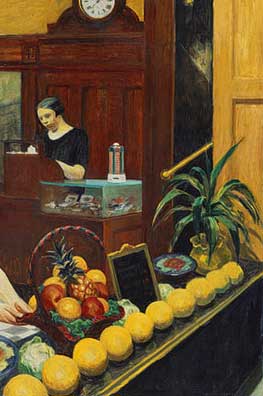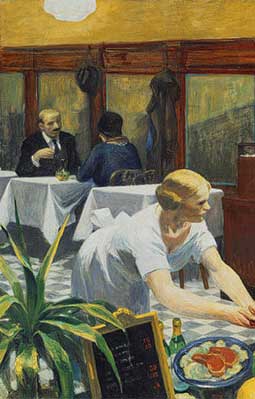
Some months ago, I shot some footage around Holland Tunnel. It was all part of a short movie — one of the so-called anthropological films I’ve been working on — devoted to the bridges and tunnels that surround Manhattan. The creative effort arose from innocuous intent. It had not occurred to me that many of these passages, despite being heavily traversed by thousands at any given hour, would be heavily protected by burly men toting submachine guns, many of their waists protruding from one too many pulls from a certain donut franchise extending its limitless basidospores across the five boroughs.*
I hoped to better understand my surrounding geography, to take in sights that New Yorkers are not supposed to look at, and to tinker with pre-existing notions of what it means to live in a city. Times Square is not just a place where tourists and cubemates shuffle like Romero’s zombies. Impromptu parades need not be limited to one cultural audience. Riverside Park isn’t just a locale for joggers to plug in their iPods. There are rigid designators — traffic signs, expected functions of roads, men shuffling in subways with cups — that we choose to block out and this selective criteria reinforces cliches. We believe we already know all this. And if we don’t, we can always Google it. But in many instances, we maintain only a superficial understanding of how these many infrastructures relate to our lives, much less the unexpected consequences that expound from such willful ignorance.
Obviously, living is an exercise in perceptive selection. It is unreasonable to expect anyone to pay attention to everything. But seeing as how there is a failure to discuss how present economic circumstances are hurting people, I felt that my little experiment might offer an intuitive nudge in the right direction, wherever that may be.
Even so, how can a two-dimensional medium, selectively cutting up particular bits and arranging them into some preordained pattern, accurately capture the totality of life? For that matter, what right did I have to offer a subjective viewpoint on a feeling varying from person to person? To address these problems, I imposed certain limitations for the anthropological films. I would not capture any dialogue or sound from the streets. And unlike Carson Davidson’s excellent short, “3rd Ave. El,” which presents the belated railway in its full elevated glory, I would do my best not to confine my peregrinations into a narrative form. In the editing, I would give into my own subconscious, permitting specific patterns to emerge around a piece of music.
My efforts with the tunnels were impeded by the fuzz. For we are no longer permitted to photograph certain territory we’re consciously ignoring. So we acquiesce to authorities who seem to believe that certain technologies, like Emperor Yuan in Ray Bradbury’s “The Flying Machine,” shouldn’t be permitted within specific territory. But might the balance be restored with a garden-variety saunter? By simply being there? Not at all. In our lust to capture everything, we’ve given up that right.
Setting aside the Port Authority Police Department’s overstated security concerns, this double-edged sword has much to do with living in a seemingly irreversible age in which nearly everything seems to be photographed or reported. On Saturday, while I was hanging out with friends, I was extremely surprised to see that my appearance was reported by two different people on Twitter. It wasn’t that these people didn’t engage with me or that they weren’t nice. They were. But they felt compelled to report where I was.
There’s also the case of Thomas Hawk, an amateur photographer who was ejected last year for photographing inside the San Francisco Museum of Modern Art. Hawk grandstanded his First Amendment right, but he proceeded to harass an employee by posting his photograph online. (In 2006, similar behavior from Hawk resulted in a security guard being fired.)
All this suggests that the need to document everything — indeed, the need to create an alternative and seemingly peerless reality — may outweigh the pleasure of knowing that you or someone else you know lived and had a good time, or that you all managed to do something interesting without anybody reporting it. While I cannot imagine a society that does not capture its highs and lows, I’m wondering if it’s even possible for our most feverish chroniclers to stop. Because if we don’t control these impulses to chronicle every private moment, we could very well be placing needless limitations on reasonable public discourse. And the territory we must explore to maintain “the real unconscious history” that Guy Debord so angrily italicized may beckon a more real and catastrophic social network.
* — With this aside, we reveal the identification of a crass and hermetic pattern. But suppose the donut franchise offers both fourth-rate sustenance and communal meaning to the law enforcement authorities taken to task? Do we stray into elitist territory or adopt the rebellious and frustrated position of not being able to circulate within restrictive geography? Certainly Guy Debord had some sharp feelings on the subject: “Tourism, human circulation considered as consumption, a by-product of the circulation of commodities, is fundamentally nothing more than the leisure of going to see what has become banal. The economic organization of visits to different places is already in itself the guarantee of their equivalence. The same modernization that removed time from the voyage also removed from it the reality of space.”
 The place pounded bad house music at deafening levels. There was very little light, save for a strip of green neon snaking around the perimeter of the bar. The waitstaff were clad in black, murky figures who sneaked up on tables like highwaymen descending upon a stagecoach. I kept feeling around for my wallet just to be sure.
The place pounded bad house music at deafening levels. There was very little light, save for a strip of green neon snaking around the perimeter of the bar. The waitstaff were clad in black, murky figures who sneaked up on tables like highwaymen descending upon a stagecoach. I kept feeling around for my wallet just to be sure.  I lost interest in the talk of a reality television show I had never watched and began observing a server who reminded me very much of one of the attorneys at the firm I was then toiling at. She had spent a good deal of time perfecting her posture, had carefully kept up her skin, and was in her early thirties. Roughly around the same age. The resemblance was so similar to me that I could imagine her replacing a tray with an attache.
I lost interest in the talk of a reality television show I had never watched and began observing a server who reminded me very much of one of the attorneys at the firm I was then toiling at. She had spent a good deal of time perfecting her posture, had carefully kept up her skin, and was in her early thirties. Roughly around the same age. The resemblance was so similar to me that I could imagine her replacing a tray with an attache.